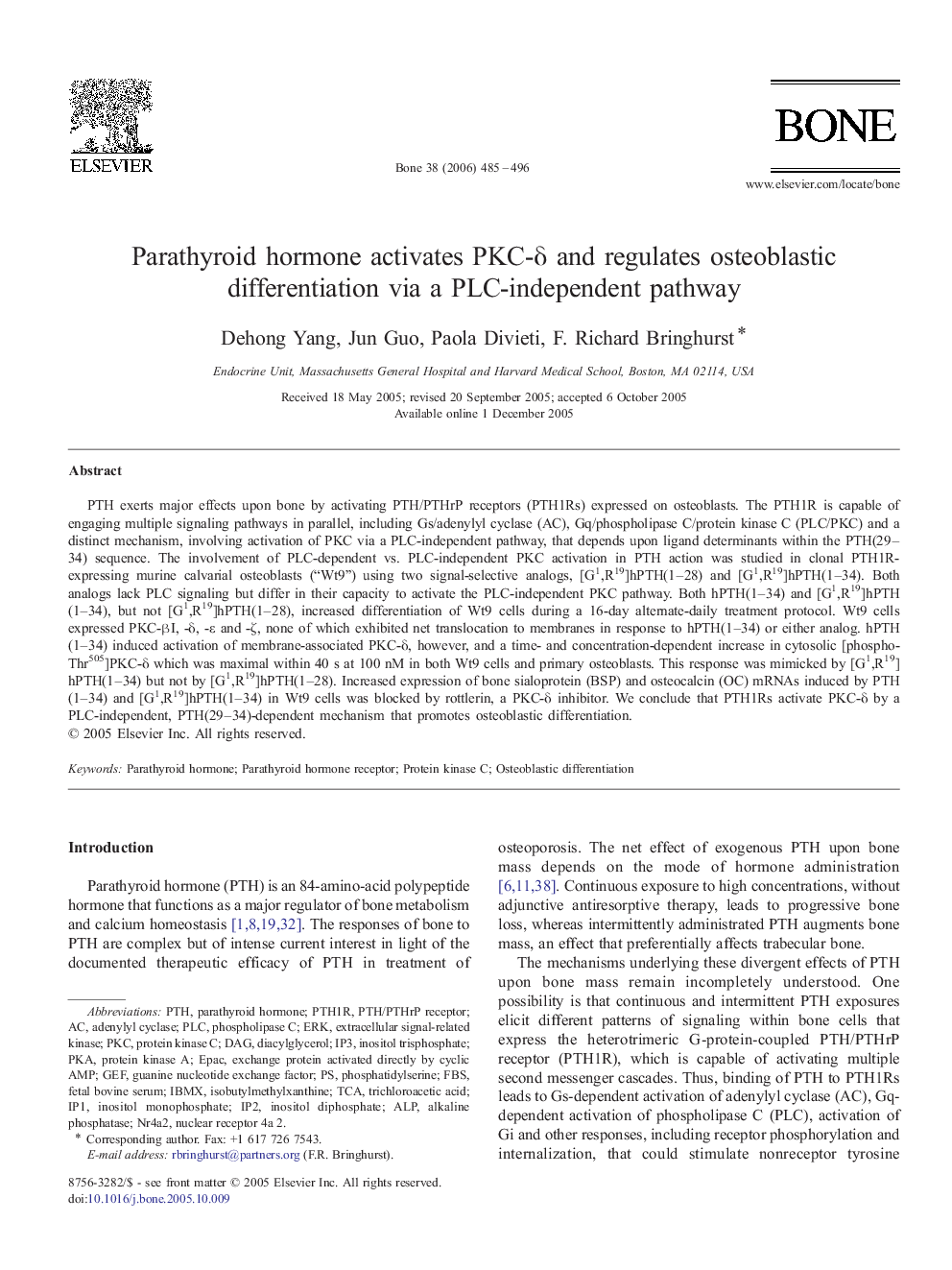| Article ID | Journal | Published Year | Pages | File Type |
|---|---|---|---|---|
| 2782324 | Bone | 2006 | 12 Pages |
PTH exerts major effects upon bone by activating PTH/PTHrP receptors (PTH1Rs) expressed on osteoblasts. The PTH1R is capable of engaging multiple signaling pathways in parallel, including Gs/adenylyl cyclase (AC), Gq/phospholipase C/protein kinase C (PLC/PKC) and a distinct mechanism, involving activation of PKC via a PLC-independent pathway, that depends upon ligand determinants within the PTH(29–34) sequence. The involvement of PLC-dependent vs. PLC-independent PKC activation in PTH action was studied in clonal PTH1R-expressing murine calvarial osteoblasts (“Wt9”) using two signal-selective analogs, [G1,R19]hPTH(1–28) and [G1,R19]hPTH(1–34). Both analogs lack PLC signaling but differ in their capacity to activate the PLC-independent PKC pathway. Both hPTH(1–34) and [G1,R19]hPTH(1–34), but not [G1,R19]hPTH(1–28), increased differentiation of Wt9 cells during a 16-day alternate-daily treatment protocol. Wt9 cells expressed PKC-βI, -δ, -ε and -ζ, none of which exhibited net translocation to membranes in response to hPTH(1–34) or either analog. hPTH(1–34) induced activation of membrane-associated PKC-δ, however, and a time- and concentration-dependent increase in cytosolic [phospho-Thr505]PKC-δ which was maximal within 40 s at 100 nM in both Wt9 cells and primary osteoblasts. This response was mimicked by [G1,R19]hPTH(1–34) but not by [G1,R19]hPTH(1–28). Increased expression of bone sialoprotein (BSP) and osteocalcin (OC) mRNAs induced by PTH(1–34) and [G1,R19]hPTH(1–34) in Wt9 cells was blocked by rottlerin, a PKC-δ inhibitor. We conclude that PTH1Rs activate PKC-δ by a PLC-independent, PTH(29–34)-dependent mechanism that promotes osteoblastic differentiation.
